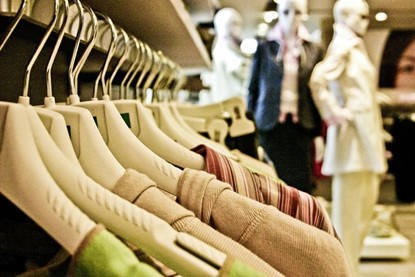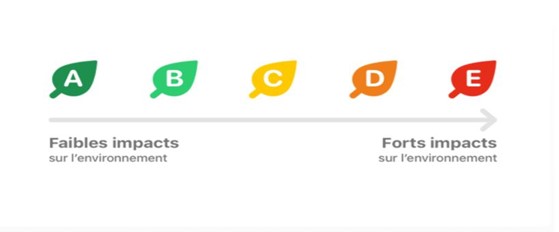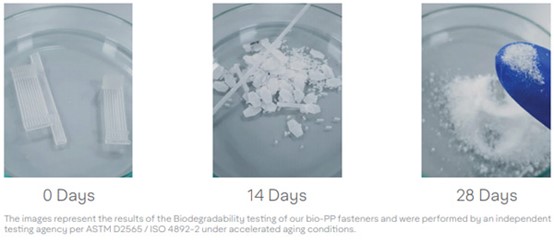Eco labels has even been mandatory required for clothing manufacturers, to meet EU member states’ previous environmental goals of reducing greenhouse gas emissions within the EU by at least 55 percent by 2030.

- 1. “A” stands for most environmentally friendly, and “E” stands for most polluting.
“Environmental Label” will mark the “environmental protection score” of the product in alphabetical order from A to E(see the picture below), where A means that the product has no negative impact on the environment and E means that the product has A great negative impact on the environment. In order to make the scoring information more intuitive for consumers, The letters A to E also have five different colors: dark green, light green, yellow, orange and red.
The environmental scoring system is developed by L ‘Agence Francaise de L ‘Environnement et de la Maitrise de L ‘Energie (ADEME), The authority will evaluate the entire life cycle of a product and apply a 100-point scoring scale.

- 2. WHAT IS Biodegradable Label?
Biodegradable Labels (hereinafter referred to as “BIO-PP”) comes into the mainstream in the application of environmental protection in the clothing industry.
The new Bio-PP clothing label is made from a proprietary blend of polypropylene material that is biodegradable after a year in the soil and when degraded by microorganisms produces only carbon dioxide, water and other microorganisms, leaving no microplastics or other harmful substances that affect soil health. In contrast, conventional polypropylene labels can take 20 to 30 years to decompose, and depending on environmental conditions, a typical plastic bag can take 10 to 20 years to decompose, leaving behind undesirable microplastics.

- 3. Sustainable Fashion Is on The Rise in Clothing Industry!
People pay more attention to the safety, comfort and environmental sustainability of clothing itself. More and more consumers have more expectations on brands in terms of environmental protection and social responsibility.
Consumers are more willing to support the products they like and value, and they are also willing to know the story behind the products — how the products were born, what are the ingredients of the products, etc., and these concepts will further stimulate consumers and promote their purchase behavior.
In recent years, sustainable fashion has become one of the major development trends that cannot be ignored in the global apparel industry. Fashion is the second most polluting industry in the world, and brands are eager to join the environmental movement and seek to grow and transform. A “green” storm is coming, and sustainable fashion is on the rise.
Post time: Apr-06-2022




